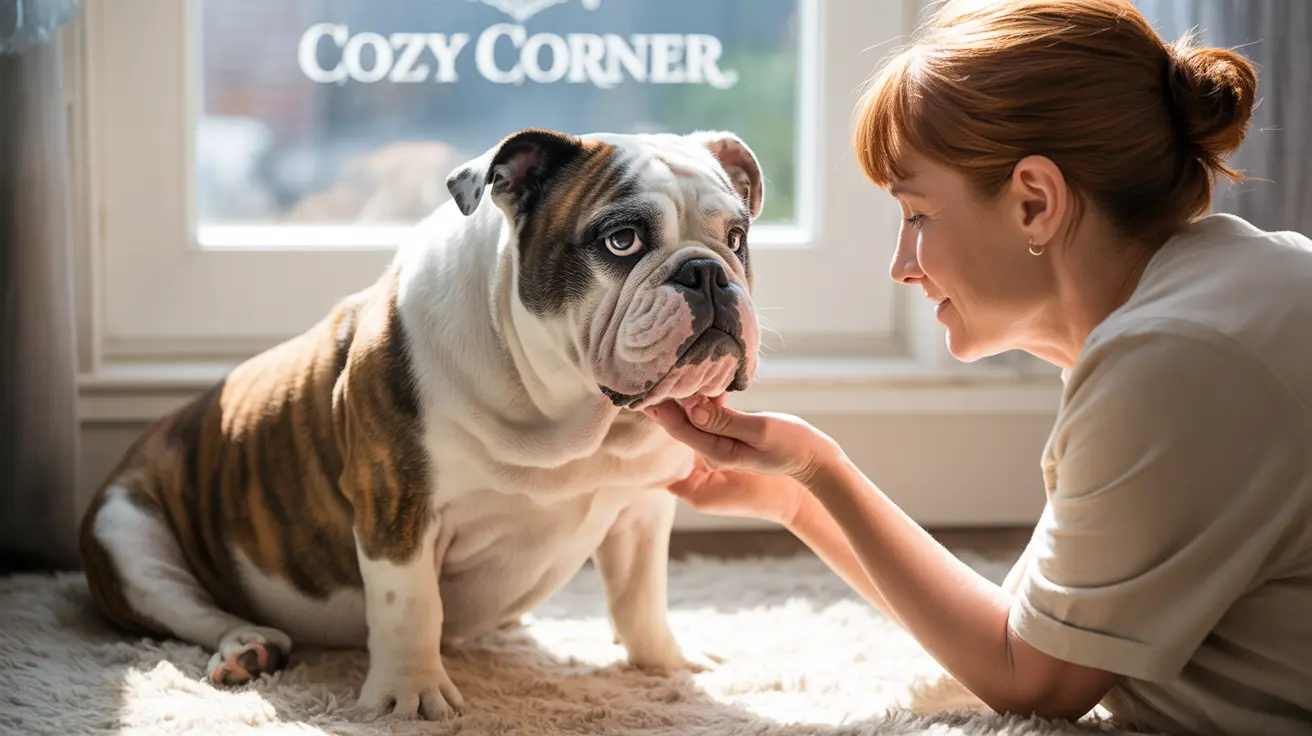When your dog has something in their eye, quick recognition and proper response are crucial for preventing complications. Eye injuries from foreign objects can range from mild irritation to severe damage, making it essential for pet owners to understand the signs and know how to respond appropriately.
In this comprehensive guide, we'll explore how to identify eye foreign bodies, provide safe first aid, and recognize when veterinary care is necessary. We'll also discuss prevention strategies and potential complications if left untreated.
Signs Your Dog Has an Eye Problem
Dogs can't tell us when something's bothering their eyes, but they display several telltale signs that indicate discomfort:
- Excessive blinking or squinting
- Pawing at the eye
- Visible redness or swelling
- Watery or mucous discharge
- Keeping the affected eye closed
- Visible foreign object in or around the eye
Safe First Aid Steps for Eye Foreign Bodies
If you notice your dog has something in their eye, follow these initial steps:
- Keep your dog calm and prevent rubbing
- Examine the eye in good lighting
- Flush with sterile saline solution or eyewash
- Use an E-collar if available
- Monitor for improvement
Never attempt to remove embedded objects or use tweezers/cotton swabs, as this could cause further damage.
When Immediate Veterinary Care Is Needed
Seek professional help if:
- The object doesn't flush out easily
- There's continued pain or discomfort
- You notice blood in or around the eye
- The eye appears cloudy or unusually blue
- Your dog can't open their eye
- There's thick or colored discharge
Prevention and Long-term Eye Health
Protect your dog's eyes by:
- Keeping face fur trimmed around the eyes
- Avoiding areas with high debris (dusty, sandy locations)
- Regular eye examinations during vet checkups
- Using protective eyewear for working dogs
- Promptly addressing any eye abnormalities
Professional Treatment Options
Your veterinarian may need to:
- Apply topical anesthetic for examination
- Use specialized equipment to remove foreign bodies
- Prescribe antibiotic eye drops
- Perform corneal staining to check for damage
- Schedule follow-up visits to monitor healing
Frequently Asked Questions
How can I tell if my dog has something stuck in their eye?
Look for excessive blinking, pawing at the eye, redness, swelling, or visible discharge. Your dog may also keep the affected eye closed or show signs of discomfort when touching the area around the eye.
What should I do immediately if my dog has debris or a foreign object in their eye?
First, try to keep your dog calm and prevent rubbing. Gently flush the eye with sterile saline solution or eyewash. If the object doesn't come out easily, don't attempt further removal and seek veterinary care.
When should I take my dog to the vet for an eye injury caused by a foreign body?
Seek veterinary care if the object doesn't flush out easily, there's continued pain or discomfort, you notice blood or clouding in the eye, or if there's thick or colored discharge. Also visit the vet if symptoms persist after initial home care.
Can I safely remove something from my dog's eye at home, and how?
You can only safely attempt removal by flushing the eye with sterile saline solution or eyewash. Never use tweezers, cotton swabs, or your fingers to remove objects, as this could cause serious damage.
What are the risks if a foreign object in my dog's eye is left untreated?
Untreated foreign bodies can lead to serious complications including corneal ulcers, infections, scarring, and potential vision loss. Some cases may develop into chronic conditions requiring long-term treatment.
Conclusion
When your dog has something in their eye, quick action and proper care are essential. While some minor irritants can be safely flushed at home, many cases require professional veterinary attention. Always err on the side of caution and seek veterinary care if you're unsure about the severity of the situation or if symptoms persist after initial home care.






